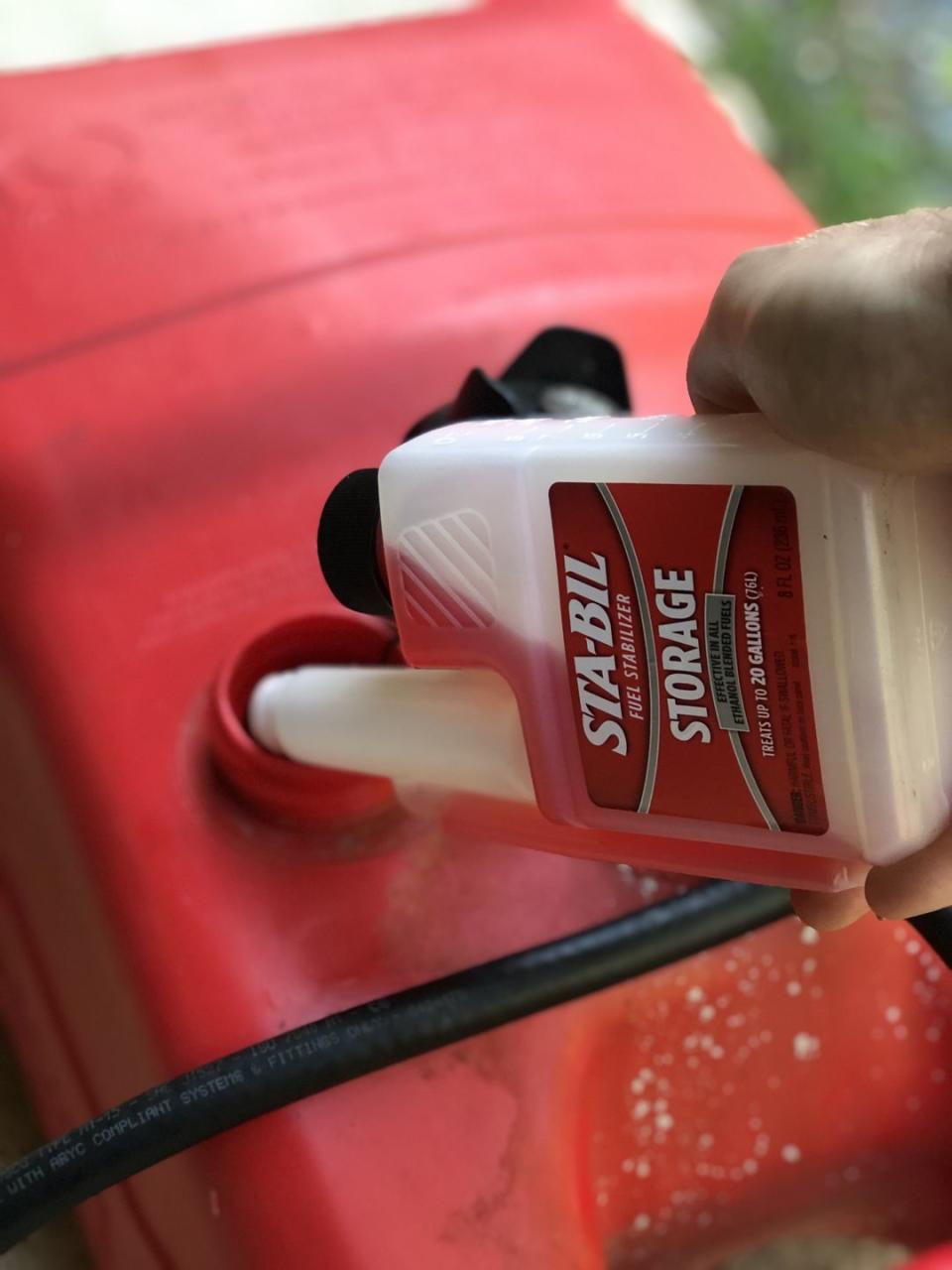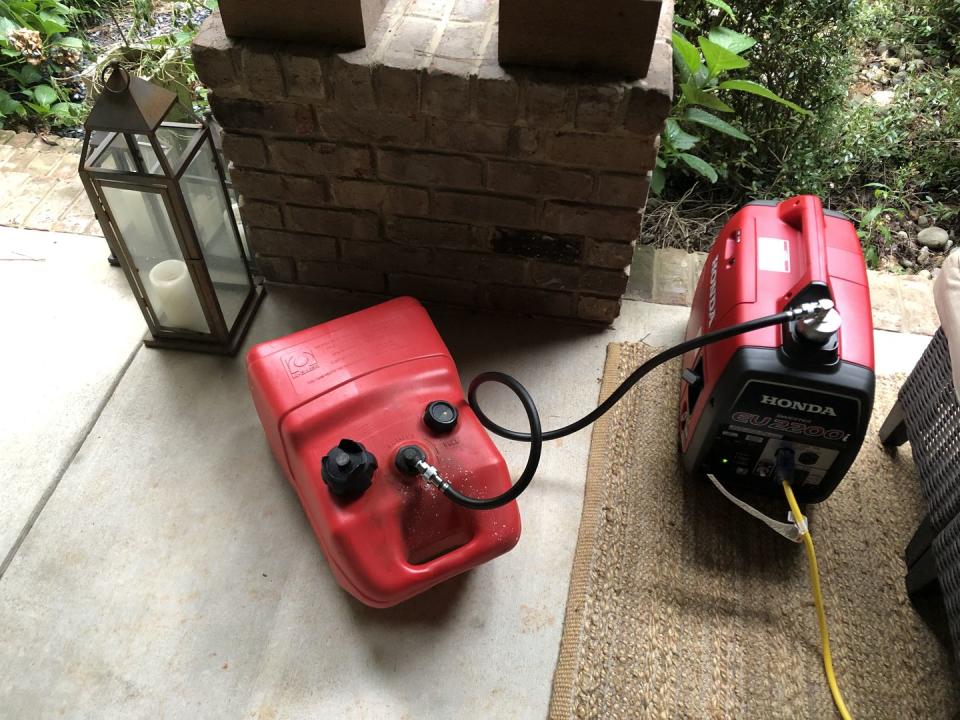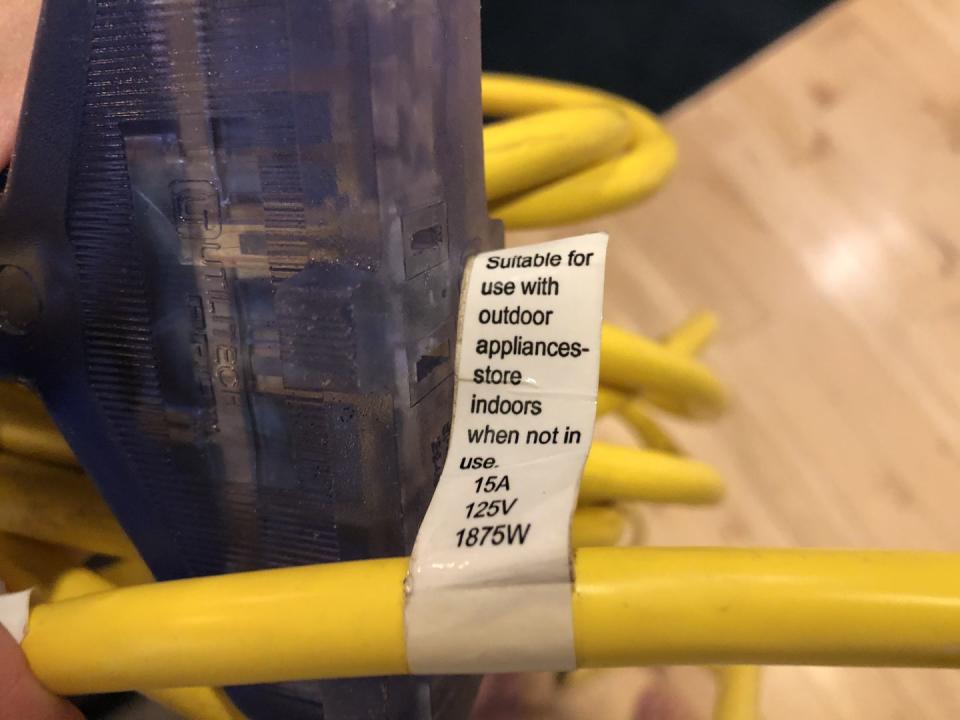The Homeowner's Last-Minute Hurricane Checklist
With Dorian making its way up the East Coast, here's what you need to know about dealing with an impending natural disaster.
Before the Hurricane
Bring in lawn furniture and ornaments, umbrellas, bird feeders, toys and loose sports equipment.
Bring in gas or charcoal grills.
⚠️ If you own a gas grill, you've got a tough decision to make. The propane tank is not safe for indoor storage; in the event of a storm-created house fire or other calamity, the propane tank could explode. Also, you don't want to compound the problems created by a storm by having a leaking propane tank stored inside your home. On the other hand, a loose tank blowing around outside in a hurricane amounts to the equivalent of a bomb. About all we can say is: If possible, secure the tank outside as best you can. Look to stake it upright against the leeward side of a shed or against a retaining wall. Never store the tank on its side. Check here for more propane safety tips.)
Double-check that windowsills are clean and can shed water. Use a piece of wire to clear any weep holes in storm windows.
⚠️ In the northern part of the Eastern Seaboard, most houses are not equipped with hurricane shutters, as they are in other parts of the country. If you feel that you need to put plywood over windows, you're faced with another tough decision: how to secure temporary plywood storm shutters without damaging the structure. If the windows, trim, and surrounding siding are wood, you can use sharp, self-tapping wood screws to secure the plywood and then repair the screw holes after the storm passes. Don't use trim-head wood screws for this. Their head does not offer enough holding power.
With vinyl siding, aluminum siding or aluminum- or vinyl-wrapped trim, you can't simply drive screws into the siding or trim without doing considerable damage. In that case, consider interior storm shutters. That is, fasten plywood to wall framing and the header above the window. No, this isn't as secure as a shutter mounted on the outside of the house. Where the hurricane winds will blow the outside-mounted shutters against the house and hold them in place, inside-mounted shutters have no more support than the long wood screws you've driven into the framing. And there's always next time. Consider Plylox clips for the next hurricane. These allow temporary shutters to be fastened in place without driving screws into the structure).
Stock up on flashlight batteries, water and canned food.
Got a Weego? Charge that sucker. Nothing worse than a dead Weego. And if you don't have a portable li-ion battery, get one. It's a storm MVP—phone charger, flashlight, self-powered jumper cables in one.
Put fresh gasoline in your chain saw and test run it. If you don't have a chain saw, buy a bow saw and spare blades.
While you're at it gassing things up (or filling spare tanks), add some fuel stabilizer. On the off chance that you're over-prepared, it might be next year before you use that fuel. A stabilizer can help keep your gas fresh for two years.

If you have other tools and supplies that could help with post-storm cleanup (loppers, pruners, shovels, crowbars, demolition bars, tarps and rope) get them in order now.
If you don't have sturdy work gloves to deal with post-storm cleanup, buy a pair. Better yet, buy a pack to share with neighbors.
If you can do so safely, trim away tree branches that could whip against the house.
Double-check your family's first-aid kit and restock if necessary.
Watch: This emergency storm shelter fits in your garage.
For windows or doors that are vulnerable to intrusion from water running downhill or collecting on the ground, get ready to stake some lumber in place. Or buy some bags of sand at a masonry supply house or home center. If the sand is not already in a plastic bag, protect it by wrapping it in a heavy-duty trash bag with its openings taped shut.
If you are a natural gas or propane customer, familiarize yourself now with how to turn off gas. If you have to evacuate your home, don't forget to shut it off.
If the Power Goes Out
Stay tuned. Even if you lose power, keep track of the storm's status with a charged laptop or a battery-powered radio.
Turn off the stove, toaster or toaster oven if the power goes out while you're cooking. You don't want the power coming back on to an unattended appliance.
Keep the refrigerator closed as much as possible to keep cold air trapped.
Be prepared with a bucket to fill the toilet tank and flush solid waste. Remind kids not to flush the toilet for liquid waste, and that you'll be the judge of when it's necessary to flush.
Of course, you could make a key purchase ahead of time and get yourself a generator. In which case, make sure it's both outside and out of the rain. A porch is a great spot to set up. Make sure your carbon monoxide detectors are working before you fire it up.

Use large-gauge extension cords from the generator's primary outlets. The thicker the cords, the easier it is for the generator to power your essentials, like an NES Classic (especially if you have kids). It's a great game console to have when the power goes out, because power outages usually mean broadband outages, too. So stock up on some offline entertainment—DVDs, old-school video games, maybe even a few issues of your favorite magazines.

After the Hurricane
Keep your cool. Everybody's in a hurry to get things cleaned up and back to normal. A slow, methodical approach will serve you better and more safely than a frenzy.
Regard hanging limbs and downed trees with extreme caution. Unless you're a seasoned pro (with a chain saw), you may just have to reconcile yourself to the fact that some downed trees are just too dangerous to deal with.
Beware of downed utility lines and the wet ground surrounding them. There's no such thing as a safe downed utility line. If some reckless homeowner backfeeds power into the grid from an improperly installed home generator, even a supposedly dead utility circuit can conduct power.
Don't plug in tools or electrical equipment that have been exposed to water. Check out the National Electrical Manufacturers Association's free guide to dealing with water-damaged electrical equipment.
And, most important of all: Team up and help your neighbors.
You Might Also Like
